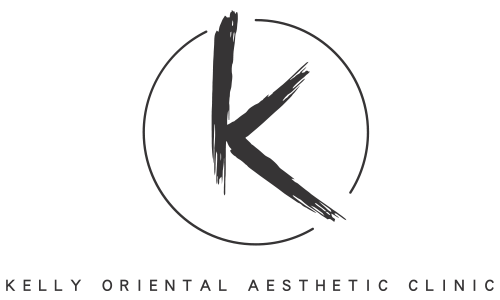Fillers
Dermal Fillers 101: A Beginner’s Guide to Safe and Effective Treatments
Dermal Fillers 101: A Beginner’s Guide to Safe and Effective Treatments
Are you curious about dermal fillers and how they can enhance your appearance? If you’re new to the world of cosmetic enhancements, navigating the various options available can feel overwhelming. Dermal fillers are a popular choice for individuals seeking to address signs of aging, add volume to specific areas of the face, and achieve a more youthful appearance without surgery. In this beginner’s guide to dermal fillers, we’ll cover everything you need to know about these transformative treatments, from how they work to what to expect during and after the procedure.
What Are Dermal Fillers?
Dermal fillers are injectable substances designed to add volume, contour, and rejuvenate the skin. They can be used to smooth out wrinkles and fine lines, restore lost volume, enhance facial contours, and rejuvenate the overall appearance of the face. The most common type of dermal filler is made from hyaluronic acid, a naturally occurring substance in the body that helps maintain hydration and volume in the skin. Other types of fillers may include calcium hydroxylapatite, poly-L-lactic acid, and polymethylmethacrylate (PMMA).
How Do Dermal Fillers Work?
When injected into the skin, dermal fillers replenish lost volume and stimulate collagen production, which improves skin texture and elasticity over time. Hyaluronic acid fillers work by attracting and retaining moisture, which helps plump up the skin and smooth out wrinkles and fine lines. Calcium hydroxylapatite and other fillers stimulate collagen production, further enhancing skin quality and volume. The result is a more youthful, rejuvenated appearance with natural-looking results.
What Can Dermal Fillers Treat?
Dermal fillers can address a variety of cosmetic concerns, including:
- Wrinkles and Fine Lines: Fillers can smooth out lines and wrinkles around the eyes, mouth, and forehead, giving the skin a smoother and more youthful appearance.
- Volume Loss: They can restore lost volume to areas that have become hollow or sunken due to aging, such as the cheeks, temples, and under-eye area.
- Lip Enhancement: Fillers can add volume and definition to the lips, creating a fuller and more attractive lip shape.
- Facial Contouring: They can contour the cheeks, chin, and jawline for a more sculpted and defined facial appearance.
- Acne Scars: Certain types of fillers can improve the appearance of acne scars by filling in depressed areas of the skin, resulting in smoother and more even skin texture.
The Treatment Process
Before undergoing a dermal filler treatment, you’ll have a consultation with a qualified healthcare professional to discuss your goals and expectations. During the procedure, the injector will cleanse the treatment area and apply a topical numbing cream to minimize discomfort. Using a fine needle or cannula, the filler will be injected into the targeted areas of the face to achieve the desired enhancements. The entire procedure typically takes around 30 minutes to an hour, depending on the areas being treated.
What to Expect After Treatment
After receiving dermal fillers, you may experience some mild swelling, redness, or bruising at the injection sites. These side effects are usually temporary and can be managed with ice packs and over-the-counter pain medication. It’s important to avoid strenuous exercise, alcohol, and sun exposure immediately after treatment to minimize swelling and bruising. Most patients are able to resume their normal activities immediately after treatment, with little to no downtime required.
Longevity of Results
The duration of results from dermal filler treatments varies depending on factors such as the type of filler used, the treated area, and individual metabolism. Hyaluronic acid fillers typically last between 6 to 18 months, while other fillers may last longer. Over time, the body naturally metabolizes the filler, gradually breaking it down and absorbing it into the surrounding tissues. Touch-up treatments may be recommended to maintain optimal results over time.
Choosing the Right Provider
When considering dermal filler treatments, it’s essential to choose a qualified and experienced healthcare professional who specializes in cosmetic injectables. Look for providers who have extensive training and certification in aesthetic medicine and who prioritize patient safety and satisfaction. A reputable provider will conduct a thorough evaluation of your facial anatomy, discuss your aesthetic goals, and create a personalized treatment plan tailored to your unique needs and preferences.
Dermal fillers offer a safe, effective, and minimally invasive solution for enhancing your appearance and achieving natural-looking results. Whether you’re looking to smooth out wrinkles, restore lost volume, or enhance facial contours, dermal fillers can help you achieve your aesthetic goals with precision and confidence. By understanding the basics of dermal fillers, the treatment process, and how to choose the right provider, you can embark on your journey to a more youthful and rejuvenated appearance with peace of mind. If you’re considering dermal fillers, schedule a consultation with a qualified healthcare professional to explore your options and create a personalized treatment plan tailored to your unique needs and goals. With the right knowledge and expertise, dermal fillers can help you enhance your natural beauty and embrace your best self.
Dermal Fillers 101: A Beginner’s Guide to Safe and Effective Treatments

